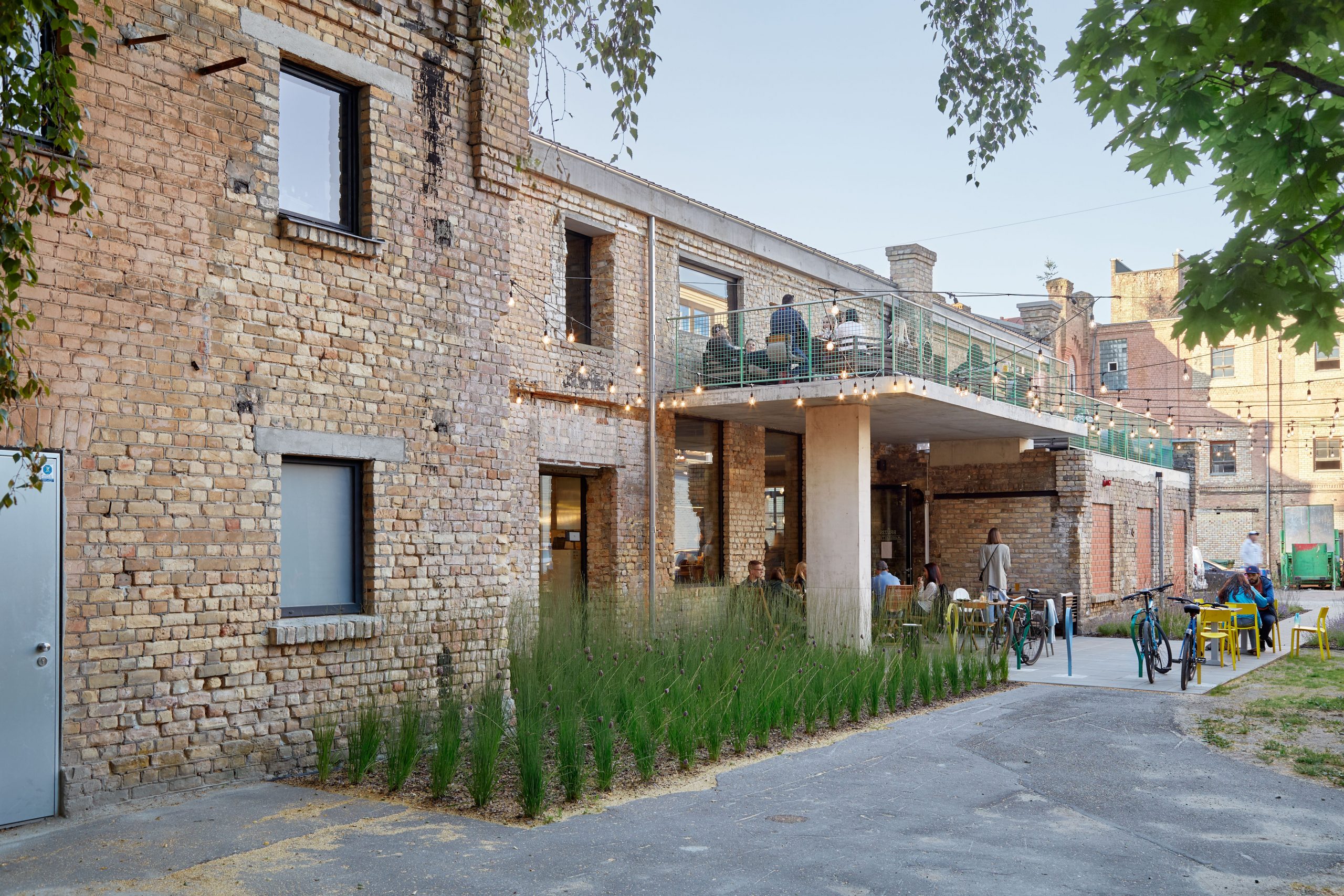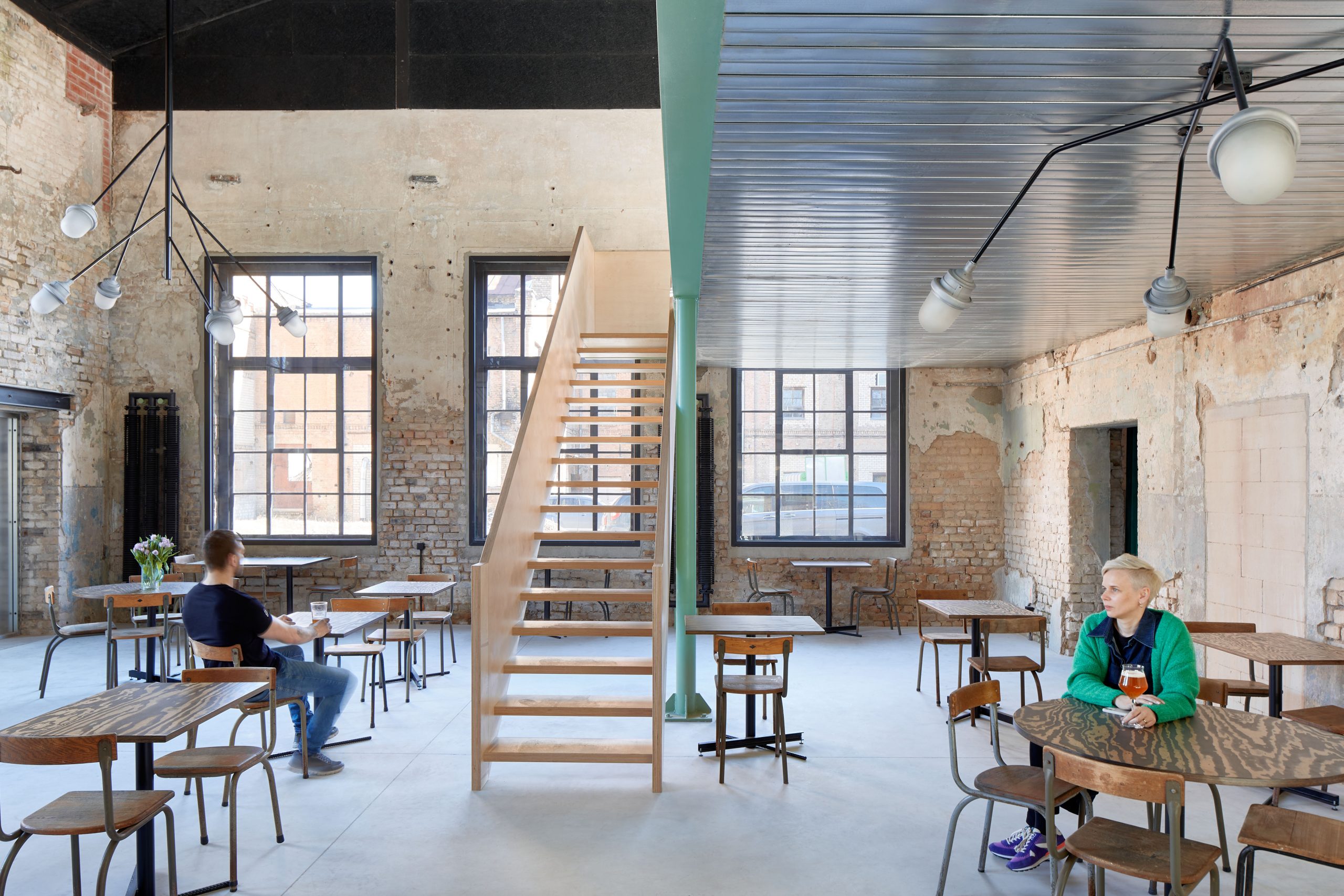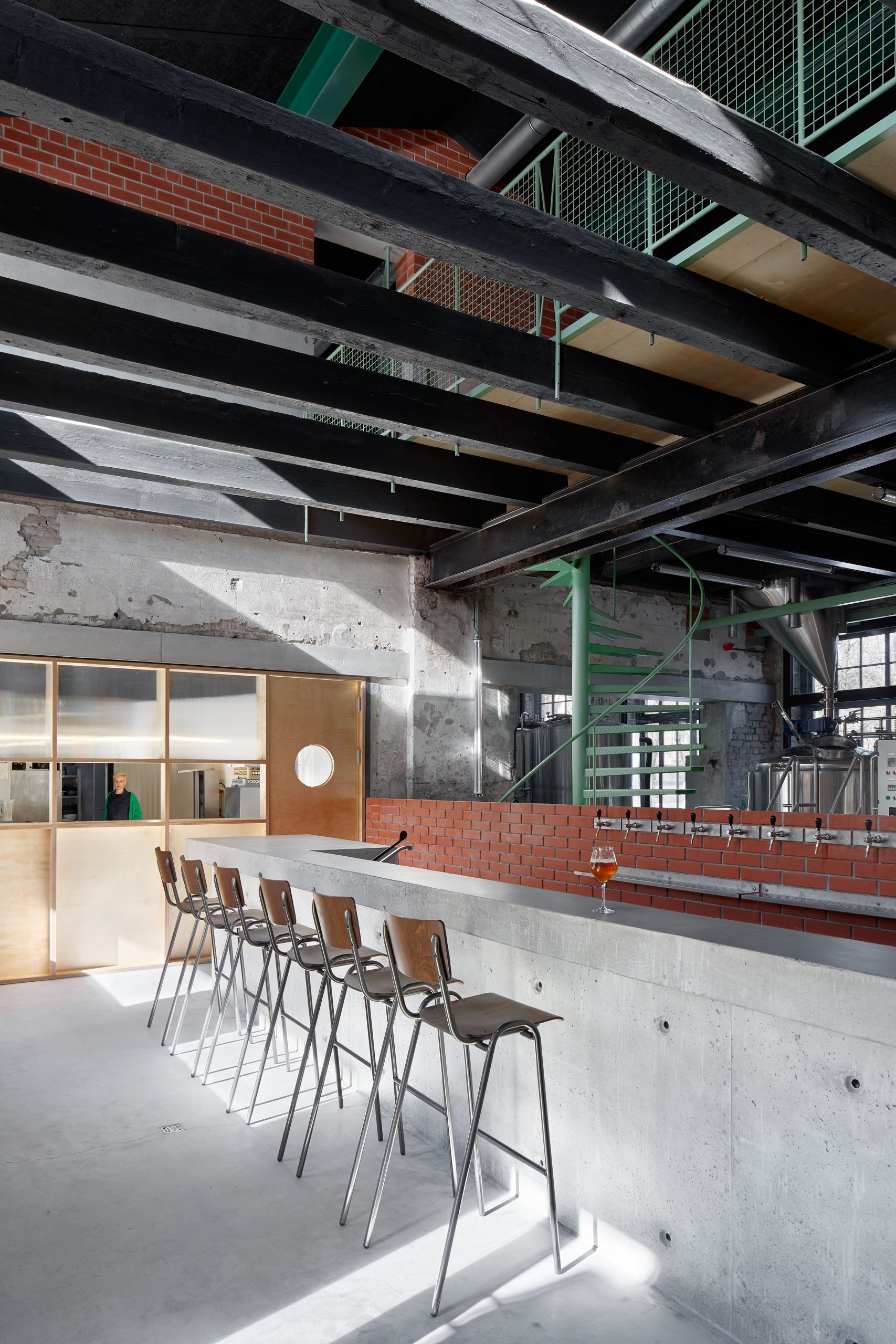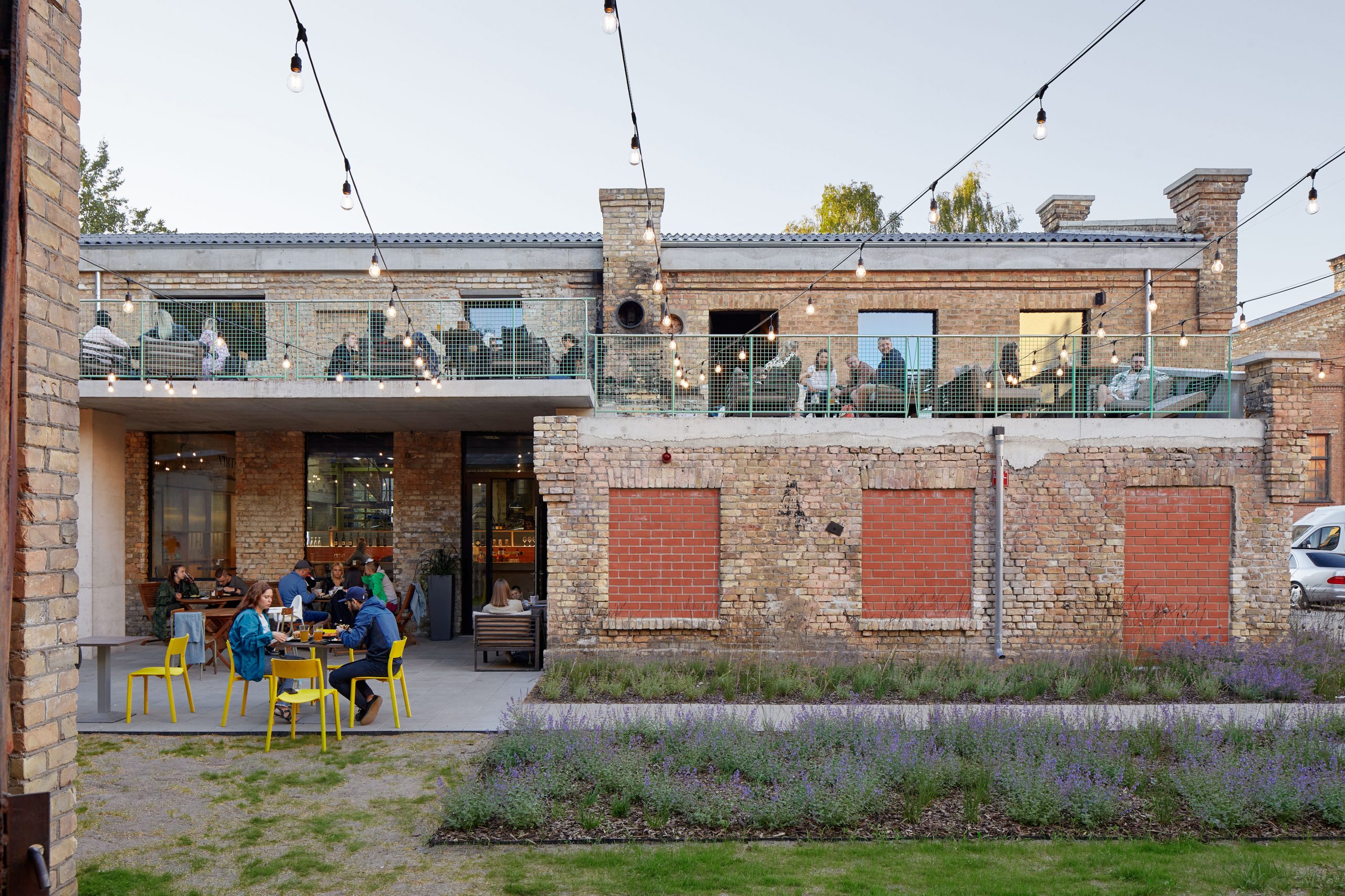Manufaktūra brewery
Brief description of the project
Brūzis is located in a historic production building adapted to the needs of a brewery and bar. The concept of the project is based on the desire of the architects to highlight the long life of this humble building and the reconstructions it has experienced in different periods in time. The result aestheticises the different construction approaches and techniques, complementing them with a new, contemporary layering that once more reuses the building to fit a different function. The visual image of the building is conceived as a manifestation of sustainability and reuse. The interior design includes both previously used furniture, as well as furniture made from materials found on the building's territory.
Originality and creativity of the idea
The project differs in its approach to interpreting the heritage of industrial architecture of different eras. Historical elements have not been restored or replaced with replicas but are complemented by contemporary structures and details. Furniture is designed specifically for this interior, and components from existing light installations are reused, integrating them into new light fixtures. An original approach can also be observed in the solutions of various architectural details, as well as in the design of the brewery process.
Definition of the problem and the relevance of the applied solutions
The main challenge was to design a brewery and a bar in a building that was in very poor technical condition, using limited funds. To achieve this, attention is paid to making the most of the existing qualities — using the material structures found on the site and integrating everything into an aesthetically and conceptually unified visual image.
Co-creation, stakeholder involvement and cooperation during the realisation process
The realisation of this project would not be possible without the customer's representatives’ trust in the competence of the project authors or their indulgence in new and experimental solutions. As the interior aesthetic involves a sensitive approach to the existing heritage, it means working in close collaboration with the builders, uncovering, transforming and adding little by little. This requires a continuous readiness from the project's authors to engage in supervision, which in this case, is also an essential part of the creative process.
Functionality and technological solutions
The interior layout of the building is adapted to the technological needs of brewing, architecturally implementing the option to observe production processes from the publicly accessible part of the building.
Aesthetics and other experiential dimensions
The project aestheticises the different historical construction approaches and techniques, supplementing them with a new, contemporary layering that once more reuses the building to fit a different function. It offers a unique aesthetic — that of sustainability and truth, the beauty of which is not immediately self-evident.
As a result of the transformations, the building has become "transparent". New lines of sight and perspectives have been created, visually connecting spaces with different functions on different levels.
The greenery features plants, which resemble a grain field visually, evoking associations with the raw materials of brewing beer.
Economic significance, sustainability and circularity
The project's sustainability is revealed through various aspects. Attention is paid to preserving the building, its layout structure and visual form while incorporating the message of a new paradigm of values. An important factor is the reduction of the ecological footprint, which was achieved, among other things, by adapting the existing building mass for reuse, using previously used furniture, or making it from materials found on site. Finally, the construction uses inherently long-lasting materials that do not require finishing for practical or aesthetic reasons.
Social relevance, inclusion, availability and accessibility
The design of the building's façades and the landscaping includes a respectful attitude towards the surrounding environment and the character of the building, which has been purposefully preserved and strengthened. The aesthetics of reuse help to build the users' relationships with the past and identity of a place and add value to the industrial, architectural heritage that does not have the status of a historical, cultural monument. It was crucial to open up this area of Brūzis and integrate it into the surrounding urban environment by tearing down the fence along Mārkalnes Street and creating inviting landscaping.
The bar terrace and the main hall are also accessible to people with reduced mobility.





